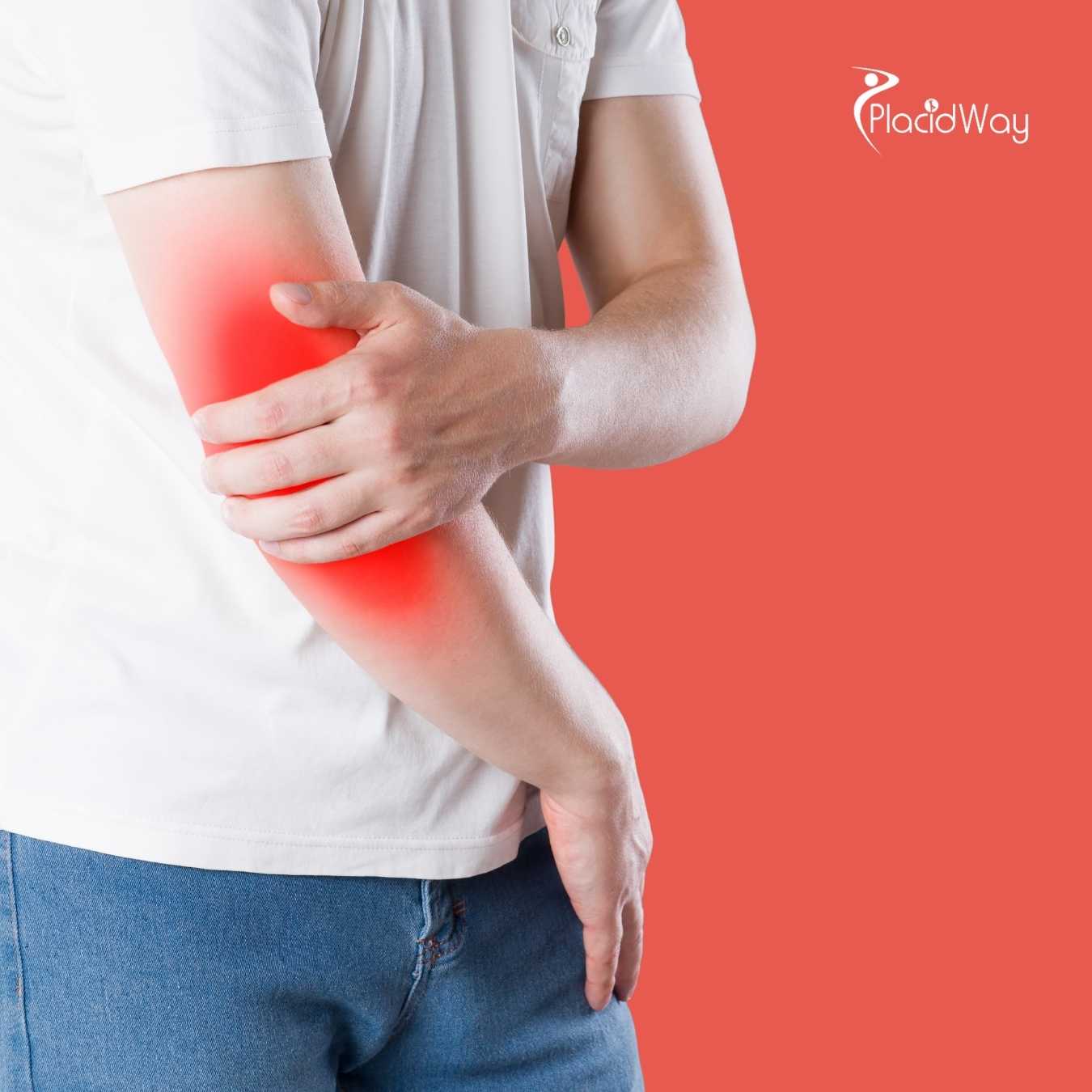
Reclaim Your Comfort: Understanding Panniculectomy Surgery
Living with a large pannus, or an apron of excess skin and fat hanging over the pubic area, can be incredibly challenging. Beyond the aesthetic concerns, it can lead to a host of physical discomforts and health issues that significantly impact daily life. If you've achieved significant weight loss, either through bariatric surgery or dedicated diet and exercise, you might be left with this lingering reminder that prevents you from fully enjoying your transformation.
Panniculectomy surgery is a transformative procedure designed to remove this bothersome excess abdominal skin. Unlike a traditional tummy tuck (abdominoplasty), which focuses on muscle tightening and aesthetic contouring, panniculectomy is primarily a medically-driven surgery aimed at alleviating symptoms like chronic rashes, skin infections (intertrigo), hygiene difficulties, and back pain caused by the weight of the pannus. For many, it's a crucial step in their health journey, offering relief and improving overall well-being.
Understanding the procedure, its benefits, and what to expect is key to making an informed decision. For those seeking high-quality, affordable care, exploring options for panniculectomy surgery abroad has become an increasingly popular and viable path, offering access to world-class surgeons and facilities at a fraction of the cost found in many Western countries. Let’s explore everything you need to know about this life-changing surgery.
What are the common symptoms and challenges of excess abdominal skin?
The presence of a large, overhanging pannus isn't just a cosmetic concern; it brings a range of daily physical and emotional challenges. Patients frequently search for relief from issues like "skin fold rash," "abdominal skin irritation," and "hygiene problems excess skin." Here are the most common symptoms and struggles:
- Chronic Skin Irritation and Infections: The folds of skin can trap moisture and heat, creating an ideal breeding ground for bacteria and fungi. This leads to persistent rashes (intertrigo), yeast infections, and even bacterial infections, which can be painful, itchy, and difficult to resolve despite diligent hygiene.
- Hygiene Difficulties: Cleaning the area beneath the pannus can be challenging, contributing to odors and making it hard to maintain personal hygiene, impacting self-confidence.
- Chafing and Soreness: The rubbing of skin against skin, or against clothing, causes chafing, discomfort, and open sores, particularly during physical activity.
- Mobility Issues: The sheer weight and bulk of the pannus can impede movement, making activities like walking, bending, exercising, or even sitting comfortably difficult. This further exacerbates weight management challenges.
- Back Pain: The constant pull of the heavy pannus can strain the back muscles, leading to chronic back pain and poor posture.
- Difficulty with Clothing: Finding clothes that fit comfortably and aesthetically can be a source of frustration, limiting wardrobe choices and impacting self-esteem.
- Body Image and Emotional Distress: Despite significant weight loss, the remaining excess skin can be a constant reminder of a previous body, leading to feelings of self-consciousness, depression, and anxiety.
What causes a pannus and who is eligible for panniculectomy surgery?
Patients often ask "what causes a pannus" or "who is a candidate for panniculectomy." The primary cause of a significant pannus is substantial and rapid weight loss. When a person carries a large amount of weight for an extended period, the skin and underlying tissues stretch considerably. After massive weight loss (often 100 pounds or more), the skin loses its elasticity and can't always retract to fit the new body contour, resulting in loose, sagging folds.
Common scenarios leading to a pannus include:
- Bariatric Surgery: Individuals who undergo weight loss surgeries like gastric bypass or sleeve gastrectomy frequently experience dramatic weight loss, making them prime candidates for panniculectomy.
- Diet and Exercise: People who achieve significant weight loss through diet and exercise alone can also be left with excess skin.
- Pregnancy: Multiple pregnancies can stretch abdominal skin and muscles, contributing to a pannus.
- Aging and Genetics: Over time, skin naturally loses elasticity, and genetic factors can influence how skin responds to stretching and weight fluctuations.
Who is eligible for panniculectomy surgery?
Eligibility criteria are crucial, especially if seeking insurance coverage. Key factors include:
- Stable Weight: Candidates should have maintained a stable weight for at least 3-6 months, ideally 1-2 years post-weight loss, to ensure the full extent of excess skin is apparent and to minimize future changes.
- Good General Health: Patients must be in good overall health, without serious medical conditions that could increase surgical risks or impair healing.
- Non-Smoker: Smoking significantly compromises healing and increases complication rates. Patients are usually required to quit several weeks before surgery.
- Realistic Expectations: Understanding that the surgery leaves a significant scar and focuses on functional improvement more than aesthetic perfection is important.
- Medical Necessity: For insurance purposes, there must be documented evidence of symptoms like chronic rashes, infections, or functional impairment that haven't responded to conservative treatments.
- BMI Considerations: While not a strict cutoff, surgeons may prefer a BMI below a certain threshold (e.g., 30-35) to optimize outcomes and reduce risks.
What types of panniculectomy procedures are available and how do they differ?
When patients inquire about "types of panniculectomy" or "panniculectomy vs tummy tuck," it highlights the need to clarify the distinctions. While both procedures involve removing abdominal skin, their primary goals and techniques differ significantly.
The most common type of panniculectomy is a simple panniculectomy. This procedure focuses specifically on removing the overhanging skin and fat from the lower abdomen, known as the pannus. The incision is typically made horizontally, just above the pubic area, extending from hip to hip. The surgeon then lifts the pannus, excises the excess skin and fat, and redrapes the remaining skin, closing the incision. The navel usually remains in its original position, though it might appear slightly lower or altered due to the skin redraping.
Key differences from a traditional abdominoplasty (tummy tuck):
- Focus: Panniculectomy is primarily functional, addressing medical symptoms. Abdominoplasty is primarily aesthetic, focusing on a flatter, more toned abdomen.
- Muscle Repair: Abdominoplasty almost always includes rectus diastasis repair (tightening separated abdominal muscles). Panniculectomy does not typically involve muscle tightening.
- Navel Repositioning: In an abdominoplasty, the navel is usually detached and repositioned. In a panniculectomy, it remains attached and may just shift slightly.
- Extent of Excision: While both remove skin, abdominoplasty often removes more skin upwards towards the rib cage and sides for comprehensive contouring. Panniculectomy focuses on the heavy hanging pannus.
Sometimes, a panniculectomy can be combined with other procedures (e.g., liposuction or even a modified abdominoplasty if aesthetic goals are also a high priority and medically appropriate). The choice depends on the patient's individual needs, the extent of the excess skin, and the surgeon's recommendation.
What is the recovery time and what can I expect after panniculectomy?
Patients often search for "panniculectomy recovery timeline" or "life after panniculectomy" to understand what to expect. Recovery is a gradual process, and individual experiences can vary, but here’s a general outline:
- Immediately After Surgery: You will likely have surgical drains placed to prevent fluid accumulation (seroma). Pain and discomfort are managed with medication. You'll wear a compression garment to reduce swelling and support the healing tissues. Most patients stay in the hospital for 1-3 nights.
- First 1-2 Weeks: Expect bruising, swelling, and soreness. Movement will be restricted, and you'll need assistance with daily tasks. Drains are typically removed within the first week or two. Walking short distances is encouraged to promote circulation.
- 2-4 Weeks Post-Op: Most patients can return to light activities and desk work. Strenuous exercise, heavy lifting, and bending should still be avoided. The compression garment remains essential.
- 4-6 Weeks Post-Op: You can gradually resume more normal activities, including light exercise, but listen to your body. Swelling will start to subside, but some firmness might persist.
- 6-8 Weeks Post-Op: Many patients can return to most regular activities, including moderate exercise, with clearance from their surgeon. The compression garment may still be recommended.
- Several Months: Full resolution of swelling can take 3-6 months or even longer. Scars will be red and raised initially but will fade and flatten over 12-18 months.
What to Expect:
- Scars: A long, horizontal scar across the lower abdomen is inevitable. Its appearance will improve over time with proper scar care.
- Numbness: Some temporary or permanent numbness in the abdominal area, especially below the incision, is common.
- Improved Comfort: The most significant benefit is the immediate relief from the physical symptoms caused by the pannus, such as rashes, chafing, and hygiene difficulties.
- Body Contour: While primarily functional, there will be a noticeable improvement in your abdominal contour and the ability to fit into clothing more comfortably.
What are the risks and potential side effects of panniculectomy surgery?
As with any major surgical procedure, panniculectomy carries potential risks and side effects. It's important for patients to be aware of these, especially when researching "panniculectomy complications" or "risks of excess skin surgery." While serious complications are rare, they can occur:
- Infection: Surgical site infections are a risk, especially in the abdominal area due to its size and potential for moisture retention. This can delay healing and may require antibiotics or further treatment.
- Bleeding/Hematoma: Excessive bleeding during or after surgery can lead to a hematoma (a collection of blood under the skin), which might require drainage.
- Seroma: This is a common complication where fluid collects under the skin, requiring aspiration with a needle or, in some cases, surgical drainage. Drains are placed during surgery to help prevent this.
- Delayed Wound Healing/Skin Necrosis: Parts of the skin flap may not heal properly or, in severe cases, the skin tissue may die (necrosis) if blood supply is compromised. This is more common in smokers or individuals with underlying health conditions.
- Numbness or Sensation Changes: Nerves can be affected during surgery, leading to temporary or permanent numbness, particularly in the lower abdominal area.
- Unfavorable Scarring: While scars are inevitable, some individuals may develop hypertrophic (raised, red) or keloid (excessively thick) scars, especially if genetically predisposed.
- Anesthesia Risks: Reactions to anesthesia, such as nausea, vomiting, or more serious cardiopulmonary issues, are inherent to any general surgery.
- Blood Clots: Deep vein thrombosis (DVT) and pulmonary embolism (PE) are rare but serious risks, which surgeons take precautions against (e.g., compression stockings, early ambulation).
- Asymmetry or Irregularities: While surgeons strive for symmetry, minor irregularities or asymmetries can sometimes occur.
Choosing a board-certified, experienced surgeon and following all pre- and post-operative instructions diligently can significantly reduce the likelihood of these complications.
Why should I consider panniculectomy surgery abroad?
Many patients are exploring "medical tourism panniculectomy" as a viable alternative to domestic care. The decision to travel for a medical procedure is often driven by several compelling factors:
- Significant Cost Savings: This is often the primary driver. The cost of panniculectomy surgery, especially if not covered by insurance, can be prohibitively expensive in countries like the US, Canada, or Western Europe. Abroad, the same high-quality procedures can be found at a fraction of the price.
- Reduced Waiting Times: In many public healthcare systems, elective surgeries can involve long waiting lists. Medical tourism offers the flexibility to schedule your procedure much sooner, allowing for quicker relief and recovery.
- Access to Specialized Surgeons and Advanced Facilities: Countries popular for medical tourism often boast state-of-the-art hospitals, internationally accredited facilities, and highly skilled, board-certified surgeons who are experts in post-bariatric body contouring.
- Combining Treatment with Travel: For many, the idea of recovering in a serene, foreign environment, possibly combining their medical journey with some gentle sightseeing before or after recovery, adds an attractive dimension to the experience.
- Privacy and Discretion: Some individuals prefer the anonymity and privacy that comes with undergoing a medical procedure away from their home country.
For those seeking effective solutions for "affordable skin removal surgery," medical tourism presents an attractive blend of quality, cost-effectiveness, and timely care.
Which countries offer the best value for panniculectomy surgery?
When considering "affordable plastic surgery abroad" or "panniculectomy cost US vs Mexico," patients are looking for destinations that balance quality and cost. Several countries have emerged as leaders in medical tourism, offering excellent value for panniculectomy surgery:
Worldwide Panniculectomy Cost Comparison (Estimated Ranges)
| Country | Estimated Cost Range (USD) | Key Value Proposition |
|---|---|---|
| United States | $8,000 - $15,000+ | High standards, local convenience, but often high cost without insurance. |
| Canada | $7,000 - $12,000+ | High standards, but long wait times for elective procedures in public system. |
| Mexico | $3,500 - $7,000 | Proximity to US, competitive prices, modern facilities, experienced surgeons. |
| Turkey | $3,000 - $6,500 | Advanced hospitals, JCI accreditation, all-inclusive packages, popular European choice. |
| India | $2,500 - $5,000 | Highly competitive pricing, world-class medical infrastructure, English-speaking staff. |
| Thailand | $4,000 - $7,500 | Renowned for patient care, luxury medical resorts, popular for combining surgery with vacation. |
*Note: These are approximate ranges and can vary based on the surgeon's experience, clinic reputation, complexity of the case, and included services (e.g., anesthesia, hospital stay, post-op care, accommodation). Always get a personalized quote.
These destinations not only offer significant cost advantages but also boast excellent medical infrastructure, often with internationally trained and accredited surgeons.
What should I expect when traveling for panniculectomy surgery abroad?
Preparing for "planning medical trip surgery" requires careful organization. Traveling for panniculectomy surgery abroad involves more than just booking a flight. Here’s a breakdown of what to expect:
- Initial Consultation and Planning: Most clinics offer virtual consultations to discuss your medical history, assess your candidacy, and provide a detailed treatment plan and quote. This is your chance to ask questions and gauge the surgeon's experience.
- Visa and Travel Documents: Research the visa requirements for your chosen destination. Ensure your passport is valid and you have all necessary travel documents well in advance.
- Accommodation and Duration of Stay: You will need to plan for an extended stay, typically 1-2 days before surgery for pre-op appointments and 2-3 weeks post-surgery for initial recovery and follow-up checks. Many medical tourism agencies offer packages that include accommodation.
- Travel Insurance: Standard travel insurance may not cover medical complications from elective surgery abroad. Look into specialized medical travel insurance that covers potential issues.
- Companion: It is highly recommended to travel with a companion who can assist you during your recovery period, as you will have limited mobility and will need support.
- Communication: Many medical tourism clinics have English-speaking staff, but it's good to confirm. Translation services may be available if needed.
- Post-Operative Care and Follow-up: Discuss the post-operative care plan, including drain removal, wound care, and follow-up appointments, both while you are abroad and once you return home.
- Transportation: Arrange airport transfers and transportation to and from the clinic. Many medical tourism packages include these services.
Being prepared for these logistics ensures a smoother and less stressful experience, allowing you to focus on your recovery.
How can I ensure safety and quality when choosing a clinic abroad for panniculectomy?
The quest for "safe medical tourism abroad" and "accredited clinics overseas" is paramount. Ensuring safety and quality for your panniculectomy abroad requires diligent research and attention to detail:
- Accreditation Matters: Look for hospitals and clinics that hold international accreditations, such as Joint Commission International (JCI). JCI accreditation signifies that a facility meets stringent international standards for patient safety and quality of care. Other local accreditations are also a good sign.
- Surgeon's Credentials and Experience: Verify the surgeon's qualifications, board certifications, and experience specifically with panniculectomy and post-bariatric body contouring. Inquire about their training, the number of similar procedures they perform annually, and their complication rates.
- Patient Reviews and Testimonials: Read reviews and testimonials on independent platforms (not just the clinic's website). Look for consistent positive feedback regarding patient care, surgical outcomes, and communication.
- Before and After Photos: Request to see a portfolio of the surgeon's previous panniculectomy cases. This gives you a visual understanding of their aesthetic style and expected results.
- Clear Communication: Ensure the clinic provides clear, comprehensive information in a language you understand. Ask about the entire process, including pre-operative assessments, the surgery itself, post-operative care, and potential risks.
- All-Inclusive Packages: Be wary of excessively low prices. A reputable clinic will provide a transparent, all-inclusive quote that covers surgeon's fees, anesthesia, hospital stay, medications, and follow-up care. Hidden costs can be a red flag.
- Virtual Consultations: Utilize video consultations to speak directly with the surgeon and medical team. This helps build trust and allows you to assess their professionalism and communication style.
- Emergency Protocols: Inquire about the clinic's emergency protocols and what happens in case of complications.
What are patient success stories from panniculectomy surgery abroad?
The true measure of a procedure's success often lies in the experiences of those who have undergone it. When searching for "panniculectomy before and after abroad" or "international patient reviews skin removal," you'll find numerous stories of individuals who have successfully navigated their medical journey overseas, often with transformative results. These stories frequently highlight a profound improvement in quality of life:
- Physical Relief: Patients consistently report immediate relief from chronic rashes, skin infections, and chafing that plagued them for years. "I can finally wear normal clothes without discomfort!" is a common sentiment.
- Improved Hygiene and Mobility: The ability to easily clean the abdominal area and move freely without the impediment of the heavy pannus dramatically enhances daily life. "It's like a weight has been lifted, literally," one patient shared.
- Boost in Confidence and Self-Esteem: Beyond the physical, the emotional impact is significant. Patients express renewed confidence, a healthier body image, and a greater willingness to engage in social activities and physical exercise.
- High-Quality Care and Affordability: Many success stories from abroad often praise the personalized attention received, the professionalism of the medical staff, and the modern facilities, all while achieving significant cost savings compared to their home countries. Patients often feel that they received exceptional value without compromising on safety or results.
- Smooth Travel and Recovery Experience: With proper planning and support from medical tourism facilitators, many patients describe their entire experience—from initial consultation to post-op recovery abroad—as seamless and well-organized, making the journey less daunting than anticipated.
These narratives underscore that choosing panniculectomy surgery abroad can be a highly rewarding decision, leading to not just a physical transformation but a revitalized sense of self and well-being.
Take the Next Step with PlacidWay
Ready to explore treatment options abroad? Discover top clinics, compare prices, and get a free quote tailored to your needs with PlacidWay.
Affordable Obesity Surgery Abroad | Best Bariatric Surgery










Share this listing